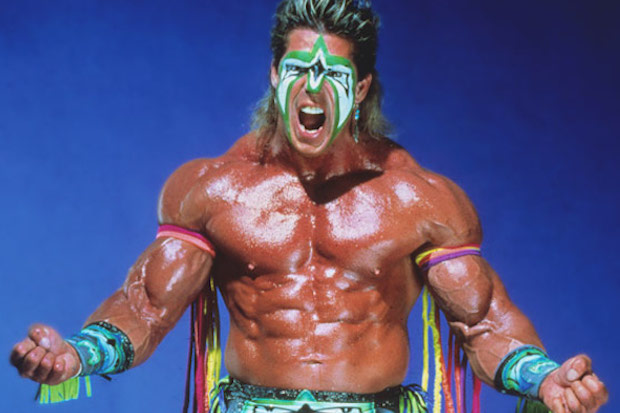Earlier this month, when a 54-year-old man with the birth name James Brian Hellwig died of a suspected heart attack outside a hotel in Arizona, a million boyhood fantasies also clutched their chests and fell to the ground. To fans – and former fans – of professional wrestling, Hellwig was The Ultimate Warrior, the man who defeated Hulk Hogan at Wrestlemania VI and taught a generation of scrawny kids to nurture their own inner Warrior.
Some of us never forgot that poignant lesson, and there’s evidence Hellwig never forgot either. Despite his obvious lack of in-ring talent (enough time has passed since his death that we can admit he wasn’t the greatest athlete) he believed in his own character until it bled into his civilian life. In 1993 he legally changed his name to Warrior (no surname necessary).
Some might smirk at what appears to be nothing more than straight-faced play acting, but pro wrestling is no joke. As a career, it is slightly less dangerous than working in bomb disposal. The repeated blows to the head alone are enough to turn your brain to porridge (since the terrifying murder-suicide of Chris Benoit, which has been attributed to the numerous concussions he sustained throughout his career, the WWE has effectively banned all moves that involve excessive impact on the skull – but it’s still a problem elsewhere). Factor in the drugs – the Warrior admitted publicly to using anabolic steroids – and you have a job fit for maniacs and obsessives. The general public’s indifference towards pro wrestling can work in its favour; if it was taken more seriously it would be illegal.
This isn’t to say that pro wrestling’s influence has been marginal. People who watch a lot of television but dismiss wrestling are fooling themselves. They’ve taken in its salient achievements without realising. Competitive talent programmes like Britain’s Got Talent often seem like wrestling shows without the fighting: you’ve got the forcefully delivered promos (passionate interviews and speeches to the camera); the fake back stories; the heels (bad guys) and babyfaces (good guys); the heightened drama and the transient prize. Many of the most fashionable US dramas are merely a series of heel turns and betrayals punctuated with fake blood (at least in wrestling the blood is real). So-called ‘structured’ reality television is even closer to a wrestling show – except, of course, it is committed to a total absence of intensity and plays to a much less demanding audience.
And pro wrestling has history on its side. People were working predetermined bouts before most modern sports were invented. Researchers recently deciphered an Egyptian document from 267 AD which seems to be a contract between two teenage wrestlers, displaying the terms of a fixed match. They would have done this for financial gain, but the spectators may have benefitted too. Choreographed fighting is superior to the real thing, just as written comedy is funnier than improv and Duke Ellington is more enjoyable than free jazz.
Denial is not an option. To quote the Warrior on peak form: ‘Exit stage left, exit stage right – there is no place to run. All the fuses in the exit signs have been burnt out!’ His death reminds us we have no choice but to respect pro wrestling.
Ben Hamilton is a freelance writer.






Comments